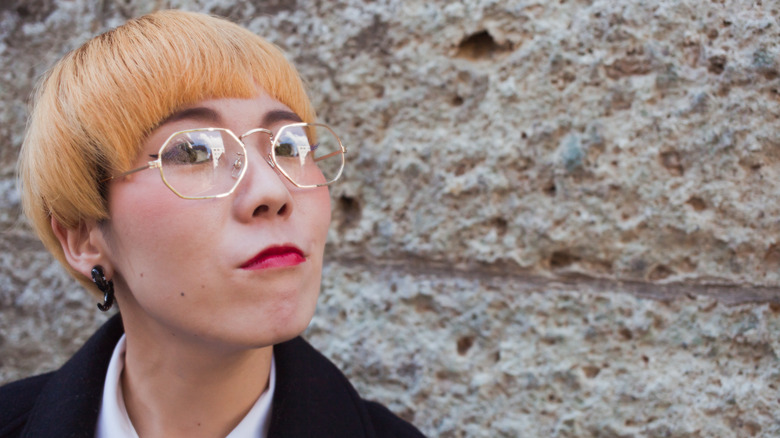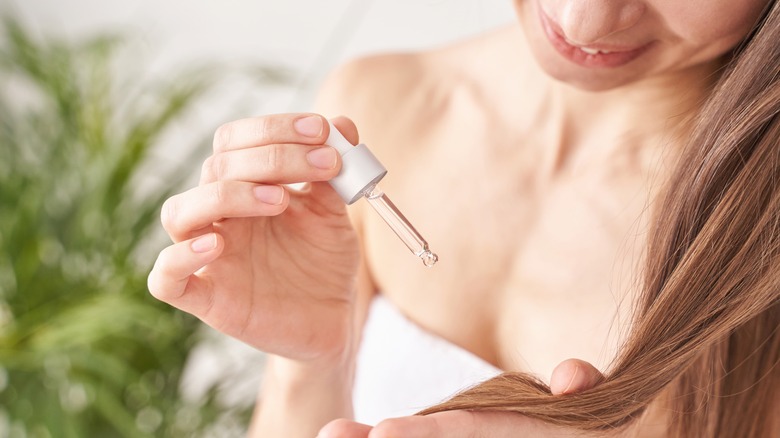Sun-In Is Gripping A New Generation Looking For Sun-Kissed Highlights
Oh, Sun-In. For some, the thought of this inexpensive at-home hair lightening spray evokes warm, fuzzy feelings of nostalgia. For others, it's a traumatic reminder of the summer their hair turned bright orange right before their very eyes. If you're not yet familiar with the product, its premise is simple. The spray promises lighter hair without all the work of bleach and delivers with just a dose of hydrogen peroxide. When the liquid is sprayed onto the hair and exposed to the sun's rays (or the heat of a blow dryer), it removes some of each strand's pigment, resulting in a slightly lighter shade.
Sun-In was originally released in 1970 and continued to provide the masses with dreams of easy natural looking blond highlights until at least the late '90s, per Click Americana. Now, it appears to be returning to popularity, especially for people who are interested in lightening their hair without the serious damage bleach can cause. Before you decide to jump on the bandwagon, here's everything you need to know about Sun-In.
What to expect from Sun-In
If you have lightened your hair with bleach in the past and are expecting a similar experience from using Sun-In, you may end up disappointed. The relatively low ratio of hydrogen peroxide in Sun-In does not have the lifting power that bleach does. While bleach is capable of lifting most hair colors to light blond in just one or two applications, Sun-In requires multiple applications just to lighten hair one to three shades.
The benefit of using Sun-In is that it is less damaging to hair than traditional bleach is. It's important to note, however, that no method of lightening is damage-free. If you lighten your hair with Sun-In, it will sustain damage. If you lighten your hair with bleach, it will sustain a higher degree of damage. Sun-In is recommended for people who wish to lighten their hair in a very subtle manner through repeated applications over a period of time. For those with dark hair, this can mean lightening just enough for red, orange, or dark yellow tones to appear.
Sun-In aftercare
Since the active ingredient in Sun-In is hydrogen peroxide, an oxidizing chemical, the product causes a reaction in the hair's cortex known as oxidative stress, per Monpure. This type of stress leads to the premature aging of hair, which can mean increasing the rate at which hairs are shed. Hydrogen peroxide can also disrupt your hair's cuticle, which can cause dry, broken, or frizzy ends (via Healthline). Bleach, in comparison, is also an oxidative product and can cause the same types of damage, typically in a more severe manner.
If you decide to lighten your hair with Sun-In or any oxidative product, it is essential to add back as much moisture as possible after the process is complete. After each application of Sun-In, you should apply a deep conditioning treatment to your hair. You can purchase a conditioning mask or simply apply a thin layer of a nourishing oil such as jojoba to help smooth and restore your hair's cuticle.


